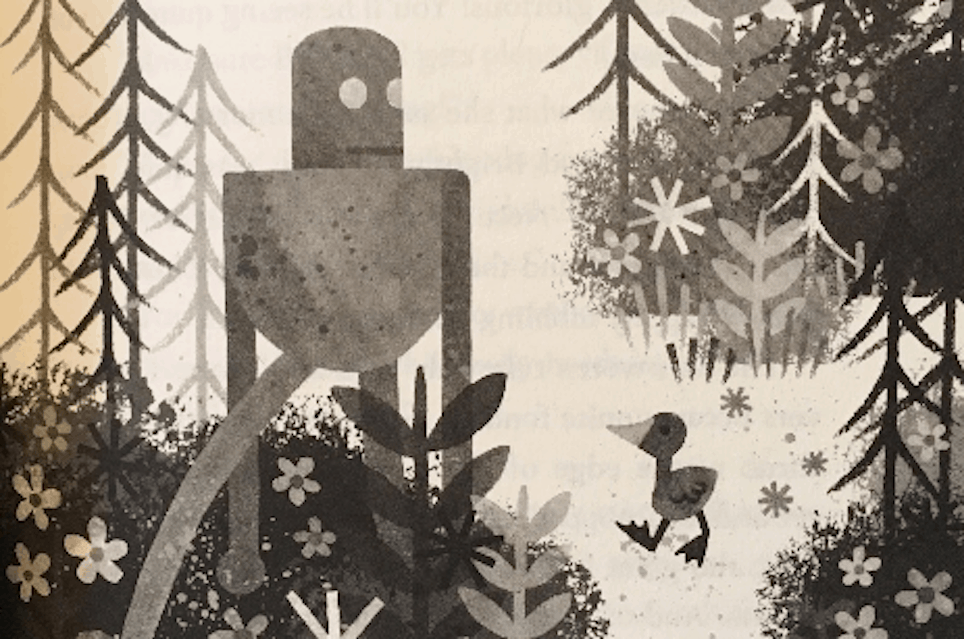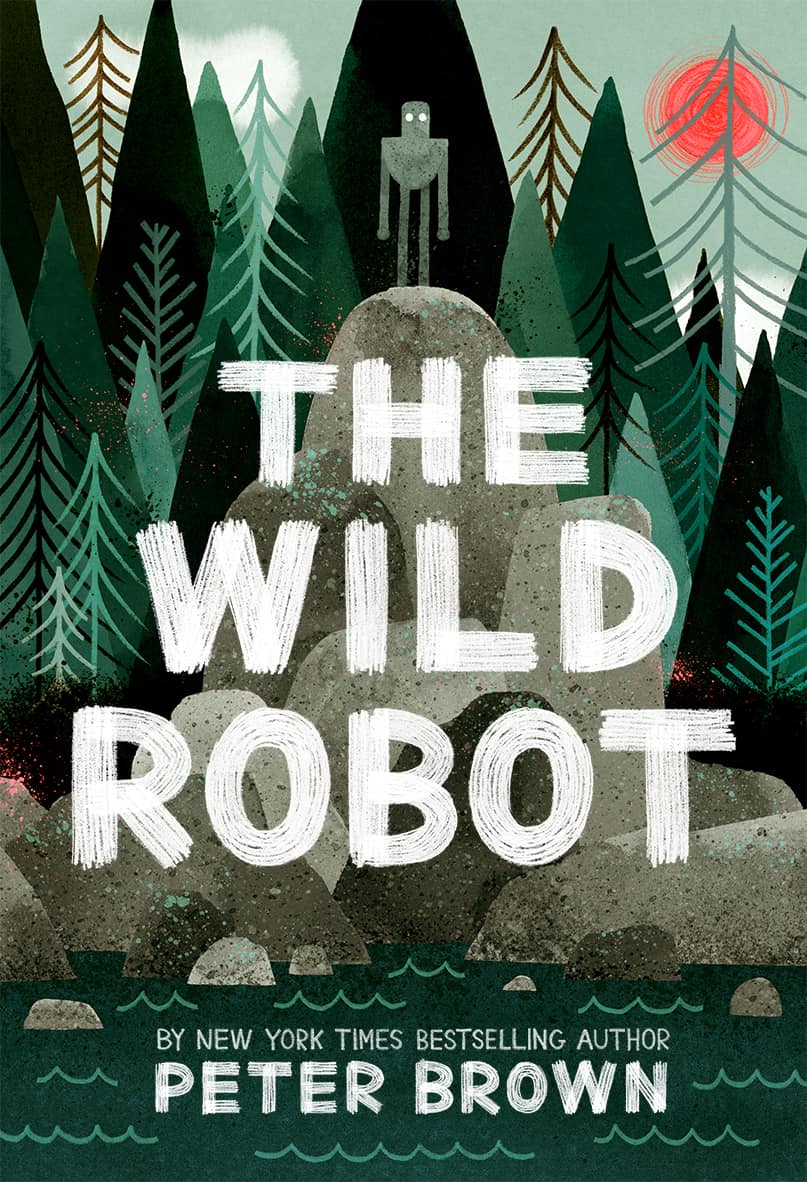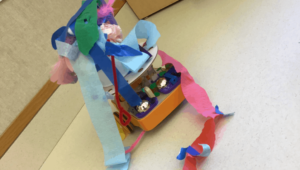Smart Review | The Wild Robot and Talking to Kids about AI

“Hello, I am ROZZUM unit 7134, but you may call me Roz. While my robotic systems are activating, I will tell you about myself. Once fully activated, I will be able to move and communicate and learn. Simply give me a task and I will complete it. Over time, I will find better ways of completing my tasks. I will become a better robot.” – The Wild Robot, Peter Brown
Since my 9 year daughter was in Kindergarten, we’ve been participating in a monthly mother-daughter book club. The group is loosely organized around a set of common goals: to use books as an opportunity to get to know one another better, to learn together, to expose our girls to strong female characters and to explore different genres of literature in fun ways.

Recently my daughter and I had the opportunity to host the club at our home, which meant that we got to select the month’s book. It was an easy one for us. As soon as we found out that our favorite picture book author had written a Young Adult novel, we couldn’t wait to read it!
We chose Peter Brown’s new novel The Wild Robot.
Every book club meeting is fun for the families involved, and we almost always come away something new that we learned together. This meeting had a bonus feature. I couldn’t wait to read and discuss The Wild Robot, because we’ve been having a lot of conversations at Getting Smart about Artificial Intelligence (AI) and the implications for today’s young learners. What a great opportunity to get a sense of what kids currently think about AI by reading and discussing a book with a well-loved, intelligent robot as the main character.
A Bit About Our Robot Roz
The Wild Robot is a beautifully-illustrated novel recommended for ages 8 & up that tells the story of “Roz”–a robot who washed up onto the beach to find remote island wilderness after the cargo ship transporting her, and dozens like her, sank. Curious otters accidentally activate Roz, and we are introduced to her with the opening quote listed above. Roz is programmed for survival and it is through this programming that she is able to adapt to a number of harsh conditions and dangerous situations to thrive on the island. After a series of events that are difficult to characterize as anything short of “life lessons,” Roz develops friendships, becomes a contributing member of the island community and even takes on the role of motherhood when she adopts and raises Brightbill the gosling.
Like many of our favorite Peter Brown picture books, The Wild Robot explores the interplay and tension between nature and technology. And while Peter Brown didn’t explicitly set out to write a book designed to get kids thinking about AI, the book was guided by an interesting inquiry that does just that. He wondered, “What would an intelligent robot do in the wilderness?” (I highly encourage you to check out Peter’s blog “The Wild Robot Lives” that describes the full process of this book’s development. It’s a fascinating insight into the writing process that authors of all ages will appreciate.)

Engaging Kids in Discussions about AI
There are basic questions that work well for any book talk that when applied to The Wild Robot will inevitably lead to conversation about AI. These include simple things like inviting kids to describe Roz, share their favorite part of the book, describe a memorable scene in the book that stood out to them, share something about the book that surprised or worried them or to offer a review of the book for other kids their age.
The following questions are more directly pointed at AI and can lead to some deeper conversations.
- What do you think it means that Roz is “programmed to survive?” What parts of her programming allowed her to survive? If you were creating her programming, what kinds of things do you think she would need to know and able to do? Was she missing anything?
- Share some examples of the way Roz learned new things? How is this the same or different from the way you learn?
- Does Roz have feelings? Why or why not? How do you know? Do you think robots can have feelings? If not, would you like to design a robot that could? Why or why not?
- How does Roz figure out how to survive on the island? Describe how she works with others to survive herself and also how she helps others to survive?
- Do you think this book is realistic? Do you think it could happen today, or is this something that isn’t likely until much farther into the future, if at all?
There were some surprising insights into what kids think about AI based on my conversation with my own kids and with the families in the book club. The most fascinating one is that the kids largely agreed that this story was realistic and could take place today or in the near future. This stood in contrast to my perspective when I was their age in the 1980s. Anytime I came across a robot on TV or in a book in those days, I felt like robots were something far into the future that maybe my great grandchildren would have. Although I have no way of knowing for sure, my best guess is that the ubiquitous nature of technology in their daily lives as well as their experiences like talking to Siri or awareness of things like IBM’s Watson, led them to this conclusion.
The questions about Roz’s feelings and ability to learn led to some confusion among the kids. They really struggled with parsing out the ability to learn from being a living thing. In their minds, if you could learn then you must be alive. The same was true with the discussion around feelings. While Roz (and Peter Brown) are careful throughout the book to state that she only “feels something like” any given emotion instead of having actual feelings, the kids came up with a lot of evidence that she could in fact feel emotions like fear, joy, sadness and concern. Mainly they provided evidence that if she weren’t actually feeling those emotions, she wouldn’t have acted on them accordingly. (If she wasn’t afraid of the bears, she wouldn’t have hidden in the tree. If she wasn’t worried about BrightBill, she wouldn’t have gone looking for him.)
Why We Should All #AskAboutAI
We believe that the rise in AI means has big implications for education, employment and our everyday lives. Our new #AskAboutAI blog series is designed to explore and share these implications.
We encourage parents, teachers, mentors and advisors to talk to young people about the emerging automation economy, and the ethical and economic implications of AI.
Books like Peter Brown’s The Wild Robot provide an entry point into these conversations for parents and teachers. You don’t need to start a bookclub to make it happen. Start small by reading together and asking questions like those above. Teachers don’t need to necessarily plan separate lessons about AI. Reading a book like The Wild Robot is a way to cover the topic of AI while simultaneously hitting other academic content standards. There’s some amazing potential for interdisciplinary projects that could combine the book study with STEM, maker and robotics as well as research and a position paper, project or presentation on related issues and implications.
We’d love to hear how you’re exploring these topics with your students. Tell us with a comment or by joining the #AskAboutAI conversation on social media.
For more in the #AskAboutAI series, see:
- #AskAboutAI: Learning to See and Speak
- AI is Improving Healthcare… But Will Benefits Be Widely Shared?
- Artificial Intelligence is Reshaping Life On Earth: 101 Examples
- 8 Ways Machine Learning Will Improve Education
- Machine Learning: The New Infrastructure for Everything






nancy
Thank you for this thoughtful article as a way to open up dialogue with children regarding AI.